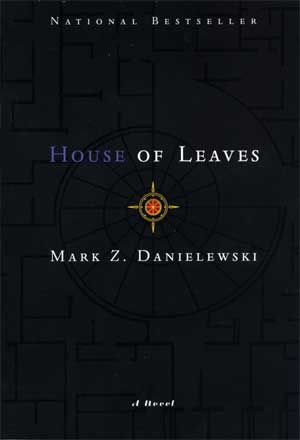
The first novel I read in my 21st century literature class is the one that has resonated with me the most — Mark Z. Danielewski’s “House of Leaves.” The length alone is a feat, but it is also one of the most structurally complex novels I’ve ever read — it’s the kind of book that reminds you just how small, but significant, you are.
The novel’s metafictional and intertextual layering makes it almost completely impossible to talk about without sounding insane, but I’ll try.
Essentially, the novel is about Johnny Truant, a trauma victim, who discovers the shredded, bloody (yes, bloody) and blackened remains of a novel called “The Navidson Record” (an academic book about a fictional movie of the same name) written by a blind man named Zampanò, which is all edited by an enigmatic group called the “Editors.”
I know.
This novel is not the sort you can just read. It demands that you physically interact with it and give it your full attention. You have to claw your way out of the pages because it doesn’t let you out without a fight.
Don’t believe me? What if I told you in certain places the text is upside-down, crossed-out or backwards (requiring a mirror to read)? What about footnotes that go on for six pages, sending you in seemingly endless circles? What about pages containing the hollow echo of a single word or punctuation mark? Because “House of Leaves” contains all of those plus more.
The text both distances readers and grabs them harshly by the collar. In some places, the shape of the text mirrors the action of the novel. For example, in the fictional book describing a scene from the fictional film, a character is crawling through a space that keeps getting smaller, which the text mimics. As I flipped furiously through those pages, I realized my heart was racing as I felt the character’s claustrophobia and fear become my own.
Honestly, there were times when my frustration made me want to rip the book in half. The text kept moving me backward, forward and side to side, in a textual labyrinth (a huge theme and metaphor in the novel) that sometimes left me feeling crushed under the weight of its self-awareness. But there were also moments that left me slack jawed, completely in awe of what language can do.
In a weird way, “House of Leaves” is a complex and mature “choose your own adventure” novel, because there’s no way to read the book the same way twice and two people can’t read the novel exactly the same way — which is sort of a really nice parallel to life.
We all inhabit this communal, physical space and even though nobody has the same exact experience, we all struggle and strive to create individual and collective meaning. Needless to say, this book is way bigger than its 700 plus pages.
Stylistic and structural achievements aside, “House of Leaves” is a beautiful, post-post-modern meditation on trauma, repression, family, love, healing, forgiveness and the difference between a house and a home.
It’s a novel that never lets you get comfortable within its pages. You can almost feel the walls of the house closing in on you. It wants to excite, entice, unsettle and scare you (and it does).
Winter is coming and the trees will be bare soon, but I can’t stop falling for “House of Leaves.”

